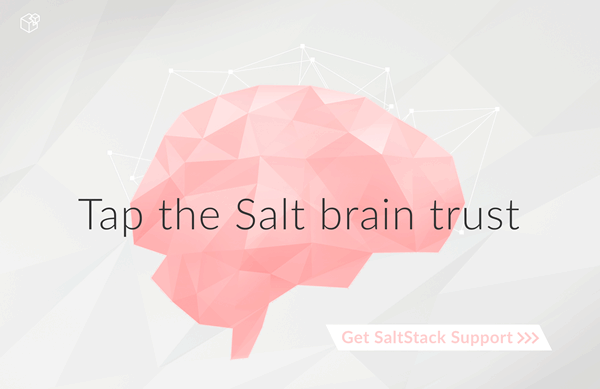Salt 0.15.0 Release Notes¶
| release: | 2013-05-03 |
|---|
The many new features of Salt 0.15.0 have arrived! Salt 0.15.0 comes with many smaller features and a few larger ones.
These features range from better debugging tools to the new Salt Mine system.
Major Features¶
The Salt Mine¶
First there was the peer system, allowing for commands to be executed from a minion to other minions to gather data live. Then there was the external job cache for storing and accessing long term data. Now the middle ground is being filled in with the Salt Mine. The Salt Mine is a system used to execute functions on a regular basis on minions and then store only the most recent data from the functions on the master, then the data is looked up via targets.
The mine caches data that is public to all minions, so when a minion posts data to the mine all other minions can see it.
IPV6 Support¶
0.13.0 saw the addition of initial IPV6 support but errors were encountered and it needed to be stripped out. This time the code covers more cases and must be explicitly enabled. But the support is much more extensive than before.
Copy Files From Minions to the Master¶
Minions have long been able to copy files down from the master file server, but until now files could not be easily copied from the minion up to the master.
A new function called cp.push can push files from the minions up to the
master server. The uploaded files are then cached on the master in the master
cachedir for each minion.
Better Template Debugging¶
Template errors have long been a burden when writing states and pillar. 0.15.0 will now send the compiled template data to the debug log, this makes tracking down the intermittent stage templates much easier. So running state.sls or state.highstate with -l debug will now print out the rendered templates in the debug information.
State Event Firing¶
The state system is now more closely tied to the master's event bus. Now when a state fails the failure will be fired on the master event bus so that the reactor can respond to it.
Major Syndic Updates¶
The Syndic system has been basically re-written. Now it runs in a completely asynchronous way and functions primarily as an event broker. This means that the events fired on the syndic are now pushed up to the higher level master instead of the old method used which waited for the client libraries to return.
This makes the syndic much more accurate and powerful, it also means that all events fired on the syndic master make it up the pipe as well making a reactor on the higher level master able to react to minions further downstream.
Peer System Updates¶
The Peer System has been updated to run using the client libraries instead of firing directly over the publish bus. This makes the peer system much more consistent and reliable.
Minion Key Revocation¶
In the past when a minion was decommissioned the key needed to be manually deleted on the master, but now a function on the minion can be used to revoke the calling minion's key:
$ salt-call saltutil.revoke_auth
Function Return Codes¶
Functions can now be assigned numeric return codes to determine if the function executed successfully. While not all functions have been given return codes, many have and it is an ongoing effort to fill out all functions that might return a non-zero return code.
Functions in Overstate¶
The overstate system was originally created to just manage the execution of states, but with the addition of return codes to functions, requisite logic can now be used with respect to the overstate. This means that an overstate stage can now run single functions instead of just state executions.
Pillar Error Reporting¶
Previously if errors surfaced in pillar, then the pillar would consist of only an empty dict. Now all data that was successfully rendered stays in pillar and the render error is also made available. If errors are found in the pillar, states will refuse to run.
Using Cached State Data¶
Sometimes states are executed purely to maintain a specific state rather than to update states with new configs. This is grounds for the new cached state system. By adding cache=True to a state call the state will not be generated fresh from the master but the last state data to be generated will be used. If no previous state data is available then fresh data will be generated.
Monitoring States¶
The new monitoring states system has been started. This is very young but
allows for states to be used to configure monitoring routines. So far only one
monitoring state is available, the disk.status state. As more capabilities
are added to Salt UI the monitoring capabilities of Salt will continue to be
expanded.


